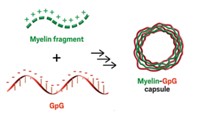Advertisement
Grab your lab coat. Let's get started
Welcome!
Welcome!
Create an account below to get 6 C&EN articles per month, receive newsletters and more - all free.
It seems this is your first time logging in online. Please enter the following information to continue.
As an ACS member you automatically get access to this site. All we need is few more details to create your reading experience.
Not you? Sign in with a different account.
Not you? Sign in with a different account.
ERROR 1
ERROR 1
ERROR 2
ERROR 2
ERROR 2
ERROR 2
ERROR 2
Password and Confirm password must match.
If you have an ACS member number, please enter it here so we can link this account to your membership. (optional)
ERROR 2
ACS values your privacy. By submitting your information, you are gaining access to C&EN and subscribing to our weekly newsletter. We use the information you provide to make your reading experience better, and we will never sell your data to third party members.
Biological Chemistry
Artificial Platelets
Materials scientists have developed a peptide-coated nanoparticle that aids clotting to stop bleeding
by Sarah Everts
December 21, 2009
| A version of this story appeared in
Volume 87, Issue 51
When a cut or injury draws blood, specialized cells called platelets form clots to stem the flow. Materials scientists have now developed a synthetic platelet that helps speed up clotting in rats and could one day be useful at accident scenes or on battlefields (Sci. Transl. Med. 2009, 1, 11ra22). Instead of trying to mimic platelets outright, a team led by Erin B. Lavik of Case Western Reserve University developed a nanoparticle that bolsters the action of a person’s own platelets. Starting with a core made of a lactic acid-glycolic acid copolymer, the team appended polyethylene glycol (PEG) arms capped off by a tripeptide composed of arginine, glycine, and aspartate. This peptide sequence binds to endogenous platelets that have been activated to begin clotting. When injected, the nanoparticles attach to platelets accumulating at a cut and help bulk up the growing clot. The fact that these nanoparticles bind only to activated platelets means they won’t spontaneously cause clotting in other parts of the body. When the research team tried out the artificial platelets by injecting them into rats, bleeding time was cut in half.







Join the conversation
Contact the reporter
Submit a Letter to the Editor for publication
Engage with us on Twitter